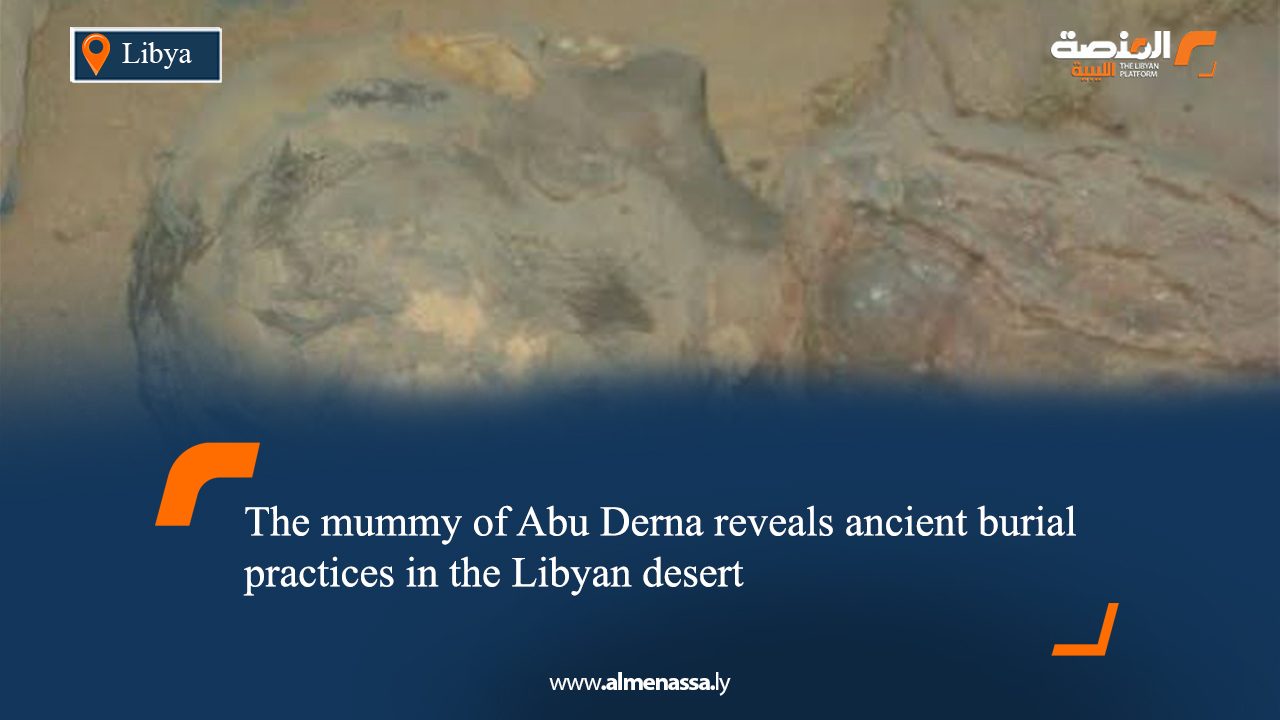In a recent post on his Facebook page, researcher Wael Abu Zaid discussed the “Mummy of Abu Derna,” highlighting its discovery, age, location, and the evidence indicating its presence.
Discovery and Dating
Abu Zaid stated that the “Mummy of Abu Derna” was discovered in 1968 and was placed under research in 1969 by a German archaeological mission led by the German archaeologist Helmut Ziegert. The mummy was found covered with tabarit trees, a desert plant common in the region, which was historically used in mummification processes. This mummy, no more than nine years old, was found in a fetal position, a burial posture common among ancient Libyan inhabitants, as noted by the historian Herodotus in the fifth century BCE.
The mummy’s burial period dates back to the third century CE. Notably, the Garamantes kingdom, with its capital Garama, persisted until the seventh century CE. Historical sources record the peaceful entry of Uqba ibn Nafi into Garama and the Garamantes’ kingdom embracing Islam in the 7th century CE.
The mummy was discovered in the Abu Derna area, near Bent Bayyah, located 60 kilometres south of Garama. The mummy belongs to the Garamantes people, the indigenous inhabitants of Fezzan, who established a significant civilisation, leaving behind numerous archaeological sites and historical landmarks. Charles Daniels authored a dedicated book about them, and the late Sudanese archaeologist Suleiman Ayoub also conducted extensive research on their history.
The child’s tombstone features inscriptions in the ancient Libyan script, Tifinagh. The inscribed word “Termfi” or “Tardfi” is likely the name of the deceased child, alongside offering tables.
This mummy is considered compelling evidence of the continuation of mummification practices in Libya into later periods, even after their discontinuation in Egypt during that era.
Preservation Site
The mummy, its tombstone, and the funerary vessels found with it are housed in the Garama Archaeological Museum, offering the public and researchers an opportunity to examine this unique discovery.


